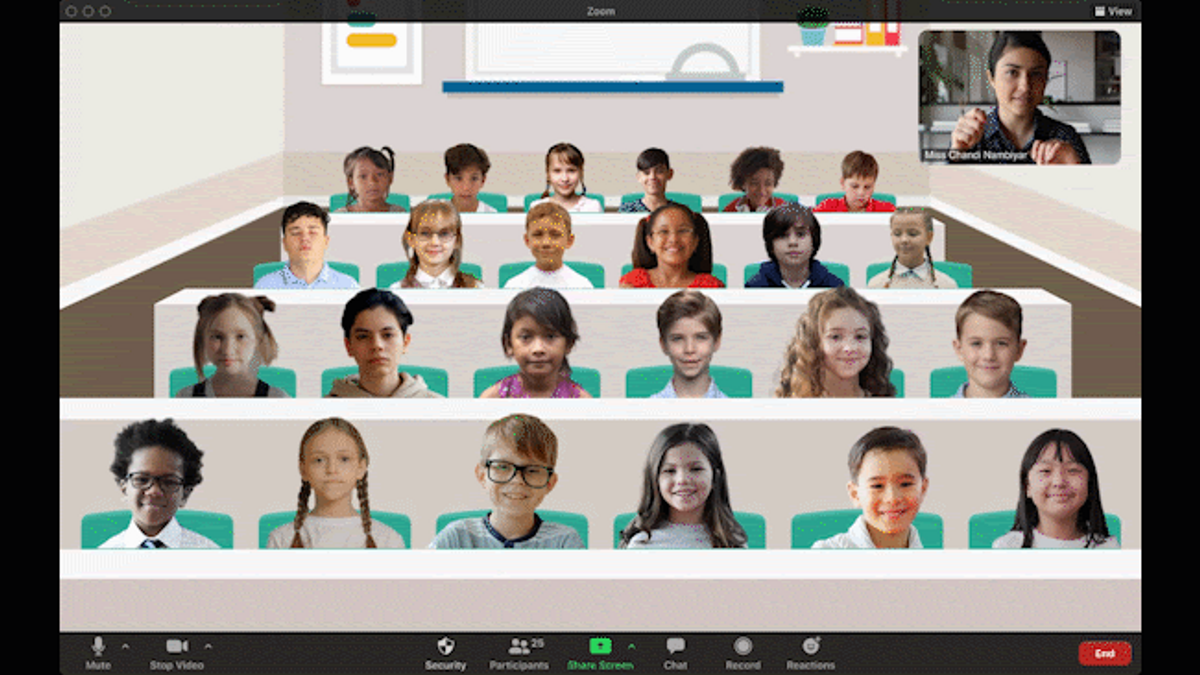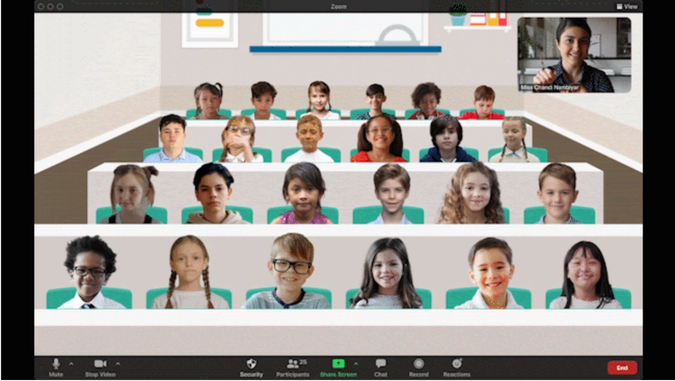
Week 1: Beyond Being There
Beyond Being There is a paper from CHI '92 that proposes an approach when designing virtual communication tools - that we should focus on building tools that can take advantage of digital media, instead of trying to reproduce real-world experiences to the digital world.
A few months ago I saw this blog post from ZOOM's official blog, announcing a new feature that lets participants to engage in their virtual meetings in a classroom-like layout.
For some reason, this immediately made me feel uncomfortable. After sharing a conversation with another fellow ITPer, I could find out the source of discomfort: Why bring the lecture-style classroom metaphor to the virtual world? This lecture-style format, which has not been changed for hundreds of years, seems to have no particular advantage over ZOOM's classic gallery view, except for the fact that it is familiar to a lot of people.
Moreover, ZOOM was implementing a visual hierarchy of kids according to a classroom layout. Although the classic layout also has a visual hierarchy(the order of portraits) making the hierarchy more explicit by enlarging/reducing the size of kids' portraits felt a little dehumanizing, as if the kids' egos are evaluated/penalized in real time according participation. I could see a grumpy looking kid at the back of the class - which certainly is not a feature that we would want in a new kind of virtual classroom.
Beyond Being There exactly tackles these kinds of approaches: designing virtual spaces by attempting to copy real world experiences. If people were asked to choose between the ZOOM classroom layouts(mentioned above) and real classrooms, a lot of people would choose real classrooms since they fail to provide any advantage from the real classroom experience - it is a mere attempt to reproduce the physical experience that already exists in the real world.
Video call platforms such as Kumospace or Gather.town can be examples trying to leverage digital media. These services let you engage in virtual conversations using space - you can move around while using video calls. Although using the same 'space' metaphor as in ZOOM's classroom layout, these services are fundamentally different since the visual hierarchy in these screens are aligned according to whether people are engaged in a conversation or not. In other words, unlike ZOOM's classroom layout, there are no grumpy kids that are isolated in the back of the classroom. Even if you are isolated from the conversation, the rpg-like controls lets you select whether to participate in certain conversations or not, by moving your avatar near to a group of people.
Overall, these examples show that adapting real-world metaphors in virtual spaces should be considerate: so that we can leverage only the good parts of virtual spaces.

